Toll Free No.: 1800 2330 0007 email: admin@dhanwantari.com

Commonly Used Herbs
| Neem (Azadirachta indica)  |
Blood purifier, beauty enhancer Pimples : Mix neem powder, red sandalwood powder and curd in equal proportions. Apply the paste on the affected area Dandruff : Heat coconut oil with 100 gms.of neem powder and apply to your hair once a week. |
| Tulsi - Basil (Ocimum sanctum) 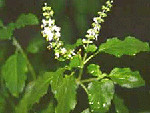 |
Antiseptic Face pack : Basil (stem/leaves) juice, lime juice and honey can work wonders to your oily skin. Pimples : Blend crushed basil with mint (pudina) juice & lime juice. Apply this on your pimples. |
| Amla - Gooseberry (Emblica officinalis) 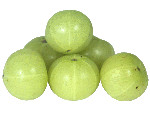 |
One of the purest forms of natural Vitamin C. Nourishes the hair, thickening and darkening it at the same time. Good tonic for the eyes. Hair tonic : Mix henna powder, gooseberry, curd & lemon juice. Apply this to your hair and leave it for an hour. Then wash your hair with a mild shampoo. |
| Shikakai | Hair-vitaliser. |
(Acacia concinna) |
Herbal shampoo: Make a paste of shikakai, soap nut and gooseberry powder. This would serve as an effective herbal shampoo. |
| Reetha - Soap nut (Sapindus trifoliatus)  |
Excellent hair tonic Dandruff : Mix soap nut with water and apply once a week. |
| Brahmi - Indian pennywort (Bacopa monnieri)  |
Relieves anxiety & tension. Enhances memory power. Effective for nervous disorders Memory enhancer: Crush few tender leaves of Indian pennywort and express the juice after filtering with a clean cloth.Take 2 tea spoon of Brahmi juice before meal. |
| Mehendi - Henna (Lawsonia albla)  |
Excellent hair conditioner & tonic. Herbal bleach: Make a blend of cucumber, orange & lemon juice with henna and apply |
| Ghritkumari (Aloe vera) 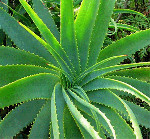 |
Used for liver & spleen disorder. Promotes & regulates menstrual period. Hair vitalizer. Liver disorder: Indian aloe is a form of cactus. After peeling the hard skin, the pulp to be cored from inside. Take a leaf from the pulp with black salt and ginger juice every morning for 10 days. Promotes hair growth /arrests hair loss: Mix Aloe Vera gel with, castor oil, olive oil and apply. Skin nourisher: Massage a blend of castor and mustard oil with aloe vera gel into your skin and wait for the magic! |
| Eucalyptus (Eucalyptus citriodara) 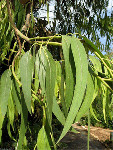 |
Best solution for blocked nose & sore throat. Excellent deodorant. Effective for acne and boils Acne & boils : Mix eucalyptus oil with mustard oil and apply on the affected zone. |
| Chandan - Sandalwood (Santalum album)  |
Skin freshener. Soul-stirring fragrance. Glowing skin: Make a paste of sandalwood with Fuller's Earth (multani mitti), besan, barley flour and wheat flour and apply. Stubborn acnes & pimples: Use sandalwood with neem and basil powder. |
| Jyotishmati / Malkangani -Staff-tree (Celastrus paniculatus)  |
Excellent pain reliever Relieves pain: Apply staff-tree oil on the affected area. |
| Nirgundi Five-leafed chaste (Vitex negundo) 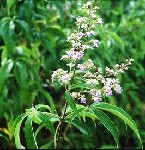 |
Essential for acne, boils, eczema and hair loss. Popular deodorant Acne,Boils, Eczema:Apply the ground and boiled leaves on the affected zone. Feeling & looking fresh: Mix boiled leaves with your bath water and use it. You will be gifted with a glowing skin |
| Til - Sesame |
Promotes hair growth. |
(Sesamun indicum) 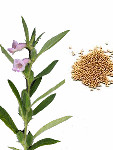 |
Acts as a herbal dye. For soft & smooth hair: Apply sesame oil and massage lightly before bath |
| Bhringaraj (Eclipta alba)  |
Essential hair tonic Thick, dark hair : Apply a mixture of bhringaraj, gooseberry, coconut, almond and olive . |
| Kesar - Saffron (Crocus sativus) 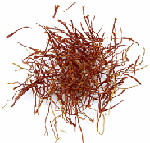 |
Effective for pimples Skin cleanser For fair complexion: Blend a few strands of saffron in a cup of raw milk and let it soak overnight. Apply on to your skin the next morning and leave it for at least an hour. |
halmogra - (Tuvrak) Garudphal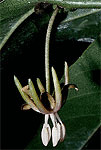 |
A local stimulant, useful in correcting disordered processes of nutrition. The bark of the tree contains tannins, which are beneficial in the treatment of fever. The oil extracted from the seeds is useful in leprosy and skin disorders. |
| Ashwagandha (Withania Somnifera) 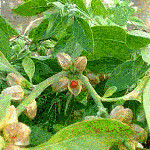 |
Ashwagandha has many significant benefits, but is best known for its powerful adaptogenic properties, meaning that it helps mind and body adapt better to stress |
| Peepal - Peepal (Ficus religiosa)  |
Effective for heart diseases, constipation, Mumps The leaves are infused in water at night, distilled the next morning and stored in bottles for heart diseases. The dried dust power of the leaves is useful for constipation and for mumps the leaves should be smeared with ghee, warmed over a fire and bandaged over the inflamed part to get relief. |
| Piyaz Onion (Allium Cepa)  |
Stimulants and a mild counter-irritant, promote the removal of catarrhal matter. Onion juice with honey is useful for colds, coughs, bronchitis and influenza. It contain iron, therefore, beneficial in treating anaemia and effective in preventing edible against heart-attack. About 30 gms of onion and seven black peppers can be finely pounded and given to the Cholera patients. |
| Kaith -Wood Apple (Feronia Limonida) 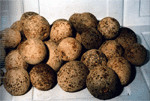 |
Effective for Aromatic, digestive and mucous membranes. The pulp of the ripe fruit, mixed with cardamom, honey and cumin seeds, is beneficial in the treatment of dysentry, diarrhoea and piles. It is also useful in preventing cancer of the breast and uterus and helps cure sterility due to a deficiency of the harmone progesterone. The bark of the tree is good for biliousness |
| Mahua (Madhuca indica)  |
Effective in arresting bleeding and secretions and in bronchitis,diabetes,eczema and Orchitis. The flowers of the tree (30 gms with 250 ml of milk ) are effective in bronchitis. A decoction of the bark can be given internally in rheumatic diseases and a decoction of the bark can also be taken in diabetes. Vapours of boiling madhuca leaves are useful in relieving the pain of Orchitis. And the leaves are also effective in the treatment of eczema. |
| Methi - Fenugreek (Trigonella foenum graecum) 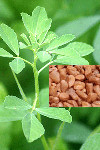 |
Effective in bad breath, body odour, anaemia and stomach disorders. The leaves help in blood formation. The cooked leaves help prevent anaemia. Tea made from fenugreek seeds in equal in value to quinine in reducing fevers and bad breath and body odour. The seeds are useful in the removal of dandruff |
| Lavang - Clove (Syzygium aromaticum) 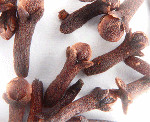 |
Stimulant and effective in relieving flatulence, cholera, caughs, asthma and headaches. Cloves promote enzymatic flow and boost digestive functioning. It is also useful for treating cholera, 4 gms of cloves are boiled in 3 litres of water until half the water has evaporated, taken in draughts, will check severe symptoms of the disease. Chewing a clove with a crystal of common salt eases expectoration, relieves the irritation in the throat and stops cough in the pharyngitis. A paste of clove and salt crystals in milk is a common household remedy for headaches. |
Linseed  |
Effective in coronary heart diseases and stroke, hypertension and inflammatory and autoimmune disorders. Omega - 3 fatty acids in the linseed oil help to dissolve tumors and eliminate breast, lung and prostrate cancer cells. It is helpful in treatment of arthritis also. It can relieve asthma noticeably sometimes within a few days of starting to take the oil. Crushed linseed make a very useful poultice for uncertain and superficial or deep seated inflammation. Continuous use of fresh linseed oil for one month completely relieves premenstrual syndrome. |
| Bael Fruit - Bel or siriphal (Aegle marmelos ) 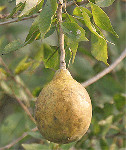 |
Effective in constipation, diarrhoea ,dysentery and peptic ulcer. Ripe bael fruit is regarded as best of all laxatives. It cleans and tones up the intestines. For best results. it should be taken in the form of sherbet. The unripe or half-ripe fruit is perhaps the most effective remedy for chronic diarrhoea and dysentery where there is no fever. The leaves are soaked overnight in water and that water is strained and taken in the morning is an effective remedy for peptic ulcer. |
| Lashoon - Garlic (Allium Sativum) 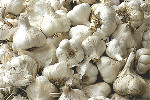 |
Effective in Asthma, High blood pressure. Lashoon is perhaps the most effective remedy for blood disorders, digestive disorders, Rheumatism, cancer and skin disorder |
| Dhatura (Dhatura Stramonium) 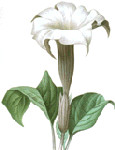 |
Dhatura is very useful in asthma, when the smoke from burning leaves is inhaled .The leaves rolled in to cigarettes can be smoked to relieve asthmatic attacks. Dhatura fruit is a specific remedy for phlegmatic and bilious types of malaria fever. The herb is valuable remedy for heart disorders .It relieves cardiac pains. Dhatura is useful in impotency. A preparation made from datura seeds with other ingredients is useful in patchy baldness.. |
| Babul (Acacia arabica)  |
The various parts of babul tree are useful in diarrhoea of ordinary intensity. Chewing of fresh bark of this tree daily, helps strengthen loose teeth and arrest any bleeding from the gum. The bark of babul tree is useful in the treatment of eczema. A decoction of the bark mixed with rock salt ,should be used as a gargle in treating tonsilitis The bark of the tree is useful in leucorrhoea .Its decoction should be used as a vaginal douche for treating this disorder. |
| Banslochan (Bambusa arundinacea wild) 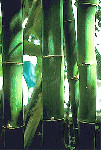 |
The siliceous concretions on young hrubs, bark, root and flowers are used. It is used for :Cough and cold Urinary retention. Infected wounds. As adjunct in tuberculosis.Erache. |
| Vidari (Ipomoea digitata Linn) 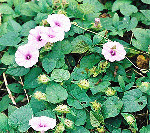 |
Parts used Roots. It is used for : General weakness. Diminished lactation. shore throat. |
| Elaichi (Elettaria cardamomum Maton) 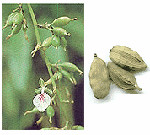 |
Parts used: Seeds. It is used in Nausea Indigestion Abdominal pain Bronchitis and upper respiratory infections. Halitosis. |
| Erand (Ricinus communis Linn) 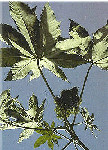 |
Parts used: Roots, root bark, leaves, seeds, oil. It is used in Rheumatism Jaundice in hepatitis Constipation |
| Gokshura (Tribulus terrestris Linn) 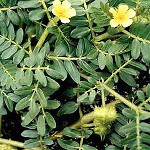 |
parts used: Fruits and roots: It is used for: Crystalluria Urolithiasis Impotence. Aging. |
| Jivanti (Leptadenia reticulata) 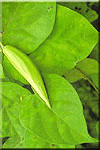 |
Parts used: mainly roots. It is used for: Diminished lactation Skin infection |
| Khadira (Acacia catechu) 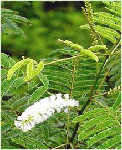 |
Parts used for: Extract, bark, wood, flowering tops, fruits and gum. It is used for: Sore throat and mouth infections Ear discharge Reduce milk flow. |
| Musta (Cyperus rotundus Linn) 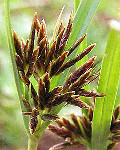 |
Parts used for: Bulbous root. It is used for: Conjunctivitis Diarrhoea Indigestion |
| Nagkesar (Mesua ferrea Linn)  |
Parts used for Stamens, seed oil. It is used for: Menorrhagia (excessive uterine bleeding) Hemorrhoids (bleedings piles) Skin infections. Rheumatic pain (local application) |
| Nimba (Melia azadirachta Linn) 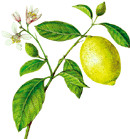 |
Parts used for: Bark , occasionally root bark, leaves, flowers, fruits, seeds, kernel, oil from seeds, exudates or gum and sap. It is used for: Fungal, bacterial and other skin infections, eczema. Diabetes mellitus- as an ancillary agent. Dental Hygiene. |
| Palash (Butea frondosa Koen)  |
Parts used for: Gum, seeds, flowers, bark, leaves. It is used for: Intestinal parasites. Geriatric tonic |
| Saptaparni (Alstonia scholaris R.) 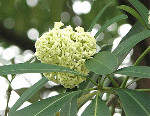 |
Parts used for: Ripe fruit, bark, leaves, latex. It is used for: periodic fevers. Dysentery Dermatoses. |
| Patola (Trichosanthes dioica Roxb)  |
Parts used for:Fruit, root. It is used for: Constipation,Fever,Skin infections / Wounds ,Alopecia areata. |
| Talmakhana (Curculigo orchioides Gaertn)  |
Parts used for: Rootstock. Used for: Erectile impotence, spermatorrhoea. General weakness Burning and fatigue. Piles and menorrhagia. |
| Tagar (Valeriana wallichii) 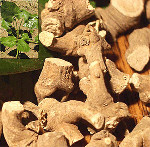 |
Parts used for: Rhizome or rootstock. Used for:Anxiety,insomnia ArthritisDysmenorrhea. |
| Rasna (Vanda Roxburghii)  |
Parts used for: Roots. It is used for: Rheumatic disorders. Local swelling Indigestion. |
| Shatavari (Asparagus racemosus)  |
Parts used for: Roots and leaves. It is used for: Decreased milk flow. |
| Safed Musli (Asparagus adscendens Roxb) 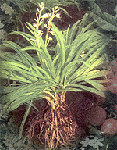 |
Parts used for: Tuberous root and rhizome. It is used for: General weakness Oligospermia. |
| Mandukparni (Centella asiatica) 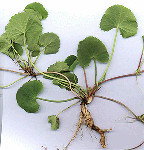 |
Parts used for: whole plant and leaves. It is used for: Anxiety neurosis Minor memory disturbance As a psychotropic agent. |
| Haritaki (Terminalia chebula) 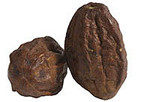 |
Useful in Constipation, Piles, Indigestion, Liver and Urinary diseases. |
| Tejpata (Cinnamonum tamala )  |
Parts used for: Leaves, bark and oil. It is used for: Flatulent dyspepsia. Halitosis. Cough Diabetes mellitus. |
| Bhumiamla (Phyllanthus niruri)  |
Parts used for: Whole herbs.It is used for:Liver Disorder. |
| Kulthi (Dolichos biflorus) |
Parts used for: Seeds. It is used for: Urolithiasis,Dysurria,Bleeding piles. |
| Shankhapushpi (Evolvulus alsinoides Linn) 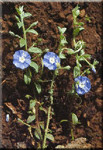 |
Parts used for: Whole herbs. It is used for: Nootropic agent Chronic bronchitis General weakness. |
| Hing (Ferula foetida Regel) 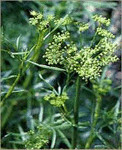 |
Parts used for: Aromatic gum resin. It is used for: Diminished, appetite, Flatulence, Dyspepsia. |
| Gular (Ficus racemosa)  |
Parts used for: Bark, fruit,latex, root. It is used for: Excessive appetite, External burning Skin inflammation, Diarrhoea / Dysentery Leucoderma |
| Yashtimadhu (Glycyrrhiza glabra) 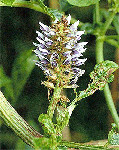 |
Parts used for: Roots and runners, either unpeeled or peeled. It is used for: Sore throat with hoarseness of voice and cough.Acid peptic disease.Chronic liver diseases General tonic |
| Jaba (Hibiscus rosa-sinensis) 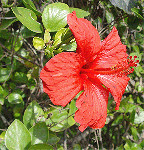 |
Parts used for: Flowers and roots. It is used for: Menorrhagia Oral contraseptive |
| Ginger (Zingiber officinale)  |
Parts used for: Rhizome uses as a carminative, antinauseant and antiflatulence agent. dried ginger for stomach problems such as stomach-ache, diarrhea, and nausea. |
| Khurasani ajwain (Hyoscyamus niger) 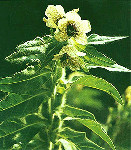 |
Parts used for:Dried and fresh leaves, flowering tops and flowers withthe branches. It is used for: Intestinal colic, Insomnia, Bronchial asthma, Motion sickness. |
| Pushkaramoola (Insula racemosa) 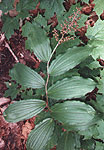 |
Parts used for: Roots It is used for: Cough and bronchial asthma.Local skin infection and inflammation |
| Pudina (Mentha arvensis)  |
Parts used for: leaves, flowering tops, stems,extract.It is used for: Indigestion/flatulence Sore throat/cough Headache.Fever General weakness |
| Lajalu (Mimosa pudica) 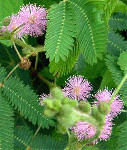 |
Parts used for: Roots, leaves and seeds.It is used for: Menorrhagia Piles Minor skin wounds Diarrhoea. |
| Pankaj / Lotus (Nelumbo nucifera ) 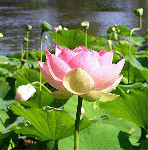 |
Parts used for: Almost all the parts of the plant. It is used for: Intrauterine growth retardation Menorrhagia. Diarrhoea/Dysentery Skin darkening. |
| Nisoth (Operculina turpethum) 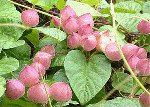 |
Parts used for: Root, stem bark It is used for:Constipation Flatulence / colic Fever Obesity |
| alimirch (Piper nigrum) 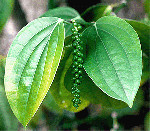 |
Parts used for: Dried unripe fruit. It is used for: Flatulent dyspepsia Sore throat/cold Viral hepatitis. |
| Raktachandana (Pterocarpus santalinus)  |
Parts used for: Bark, exudates.It is used for: Local inflammation ,skin, eye. Skin infections - furuncles |
| Anar (Punica granatum) 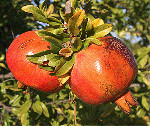 |
Parts used for: Fruit rind, roots, roots, roots-bark, flowers. It is used for: Reduced appetite Diarrhoea. Nausea/vomiting Epistaxis. |
| Bala (Sida Cordfolia) 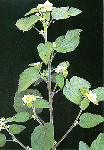 |
Parts used for: Root, leaves, seeds. It is used for: Bronchospasm and cough Post partum weakness. Fever, Urinary infection. |
| Chobchini (Smilax chinensis) 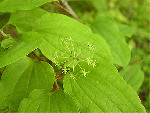 |
Parts used for: Rhizome. It is used for: Syphilis Local painful swelling. |
| Kakmachi (Solanum Nigrum) 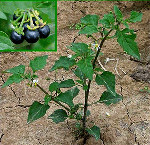 |
Parts use for : leaves, whole plant, fruit. It is used for: Viral hepatitis Swollen joints. |
| Kuchala (Strychnos nux vomica) 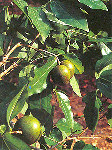 |
Parts used for: Bark, seeds, berries. It is used for: Local imflammation Chronic diarrhoea General weakness |
| Shaalmali (Bombax malabaricum) 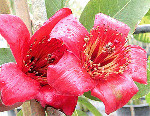 |
Parts used for: Almost all the parts of the tree are used for different medicinal purposes. It is used for: Diarrhoea, dysentery, General Weakness, small wounds and inflammation, acne valgaris |
| Shallaki (Bosewellia serrata)  |
Parts used for: Bark Gum It is used for: Rheumatic disorder, dyspepsia, Diarrhoea. |
| Arjun (Sarata Arjuna)  |
Heart Disorders :Known to have a stimulant action of the heart & doctors use it as a cardiac tonic. Thick portion of the bark made with milk every morning on an empty stomach. Asthma :A dish of condensed milk and rice (Kheer) should be prepared and p+laced where the moonlight falls upon it the whole night. During the early hours, 12 grams of the powdered bark should be sprinkled over the kheer and taken by the patients to his consumption. This is believed to provide relief. Diarrhoea and Dysentery:A decoction of the dark taken in dose of 15 to 30 grams may relief. Acne:An ointment made by mixing the bark and honey applied over the affected area, can treat acne successfully. |
| Amaltas (Cassia fistula) 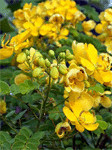 |
Constipation:The pulp from the fruits, called Cassia Pulp, is a well known laxative, and is used in the treatment of constipation. It can be safely taken even by children and expectant mothers. About 50 grms of the pulp is soaked in water overnight, then strained in the morning & taken with suger. Common Cold & Fever:The root of the tree is useful in common cold & fever. Smoke from the burning root can be inhaled. Intestinal Disorders:For children suffering from flatulence, the cassia pulp can be applied around the navel to ensure evacuation. Skin Disorders:The Leaves of the tree are useful in relieving irritation of the skin and in alleviating swelling and pains. Their juice or paste serves as a useful dressing for ringworm and inflammation of the hands or the feets caused to cold. |
| Punarnava (Boerhaavia diffusa) 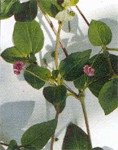 |
Obesity :Punarnava is highly beneficial in the treatment of obesity as almost all anti-obesity herbal preparations contain it in one or the other form. It is beneficial in the treatment of several common ailments like dropsy, ascities, oedema, anaemia, cough, pluerisy, nervous weakness, constipation and paralysis. Dropsy:Punarnava increases the secretion and discharge of urine. Its effective treatment of dropsy, a disease marked by an excessive collection of a water fluid in the tissues and cavities or natural hollows of the body. The fresh boiled herb should be given in the treatment of this disease. Ascities:The herb is useful in the treatment of ascites, a disease charecterised by accumulation of fluid inside the peritoneal cavity of the abdomen. Stomach Disorders:Its useful to streathening the stomach particularly intestinal colic. A powder of the root is given in the doses of 5 grms thrice a day. Asthma:It promotes the removal of catarrhal matter & phlegm from the bronchial tubes. A powder of root can be taken in small dose 3 times a day. |
| Gurmar (Gymnema sylvestre)  |
Diabets:Gurmar is a blood sugar balancing herb that slows the absorption of sugars into the blood stream and slows the conversion of sugar to fat Reduce Weight:Gurmar fits well into a weight-management program because it complements exercise and dietary reform by promoting healthy blood glucose balance |
| Babool (Acacia arabica Willd)  |
Babul bark finds its primary applications in oral & dental hygiene, burn injuries and in the management of skin diseases |
| Nagarmotha (Cyperus rotundus)  |
Nagarmotha is widely used by Ayurveda to treat many types of disturbances caused by vitiation of pitta. It is traditionally used to quench hard throat of summers, fevers, solar dermatitis etc. It is known through experimental investigations that it exhibits marked anti-inflammatory activity. |
| Ulatkambal (Abroma augusta)  |
Ulatkambal(Devil’s cotton) is a uterine stimulant and is specifically indicated in amenorrhoea and oligomenorrhea. Due to its pain relieving activity it is also given in Dysmenorrhoea. It is given three days prior to the onset of menses and is continued till the second day of the cycle |
| Kalmegh (Andrographis paniculata)  |
Digestive:Promotes Digestion. Hepatoprotective: Protects the liver and gall bladder Anti-acne: Protect skin from pimples. Anti-inflammatory: Reduces swelling and cuts down exudation from capillaries. Expectorant: Promotes mucus discharge from the respiratory system. Laxative: Aids bowel elimination. |
| Chitvan (Alstonia scholaris)  |
The bark paste is applied locally in chronic skin ulcers. It is given in postnatal conditions to mothers for increasing lactation. It also increases digestive power and is also given in fever as an antipyretic. |
| Bach (Acorus calamus) 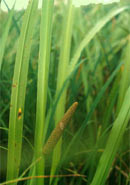 |
Stomach Disorders:Calamus gives relief to heavy stomach by relieving flatulence, colic and increasing appetite. The burn roots mixed with some bland oil such as refined coconut oil or a poultice of the root may be applied over the abdomen in treatment. Diarrhea and Dysentery:The drug is a time-tested remedy and is an ingredient in Ayurvedic medicine for chronic diarrhea. Asthma: Its highly beneficial for asthma. It removes catarrhal matter and phlegm from the bronchial tubes. About 65 centigrams of the herb is taken every 2-3 hours in this condition. Whopping Cough:The powder of the roasted herb is an effective home remedy for children suffering from whopping cough. A pinch of this powder can be given with honey. Mouth Disorders:The herb is useful in treating mouth ulcers, coating on tongue and rawness, that is, inflammation of the skin. A small piece of the herb should be rubbed on the tongue to obtain relief. |
| Saunph (Fenniculum vulgare) 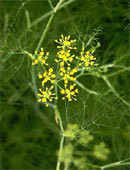 |
Digestive Disorders:The use of fennel is well known as a digestive aid. It may be given in small quantities to help young children digest carbohydra-tes. It is also useful in indigestion, biliousness, flatulence, constipation and atonic dyspepsia. Chewing its seeds after meals prevent foul breath, indigestion & vomiting. Colic:Fennel is one of the safest herbs for colic, for helping the baby to to release gas & relieve tummy. Menstrual Disorders:Fennel seeds promote menstruation and regulate monthly periods. An infusion of the seeds can be given in painful menstruation and other menstrual irregulari-ties. |
| Anantamul (Hemidesmus indicus) 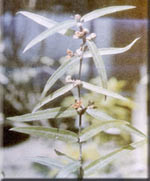 |
Stomach Disorders:Its beneficial for treating stomach disorders like dyspepsia and loss of appetite. The powder of the roots is given in doses of 1 to 6 grms with milk in these condition. Genito-Urinary Disorders:The herb is very useful in syphilis, leucorrhoea and other genito urinary disease. A decoction of its roots is to be administered in 60-90 ml doses thrice a day. A syrup made from its roots is an effective diuretic. Expectorant: Promotes mucus discharge from the respiratory system. Inflammation:A paste of its roots is applied locally in treating swellings, rheumatic joints and boils. Hair Tonic:The herb contains a hair-growing hormone. A decoction of the root, used as a hair wash promotes hair growth. |
| Kutki (Picrorhiza kurroa) 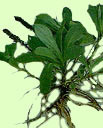 |
Cirrhosis of Liver:Its a choice of drug for cirrhosis of the liver among adults in ayurveda. Its root is given in powdered form. A teaspoon of the powder, mixed with an equal amount of honey is administered daily. Jaundice:Its beneficial in jaundice also. Indigestion:Very useful in dyspepsia. It strengthens the stomach and promotes its action, while improving appetite and stimulating the secretion of gastric juice. Ascites:Its beneficial in the treatment of ascites, a disease characterized by the accumulation of fluid in the peritoneal cavity of the abdomen. About 50 grms of the herb is boiled in 200 ml of water till 3/4 of the water has evaporated |
| Jatamansi (Nardostachys jatamansi)  |
Nervous and Convulsive Disorders:
It can be used in the treatment of several nervous and convulsive disorders such as hysteria, epileptic, fits and certain disturbance caused by menopause. It acts as a tranquilizer. Intestinal Worms:Its very useful for Intestinal worms. It can be given to children with a purgative like jalap. Menstrual Disorders:The herb aids menstruation and regulates the menstrual cycle. It is specially useful in dysmenorrhoea - that is painful and difficult menstruation. |







 Home
Home